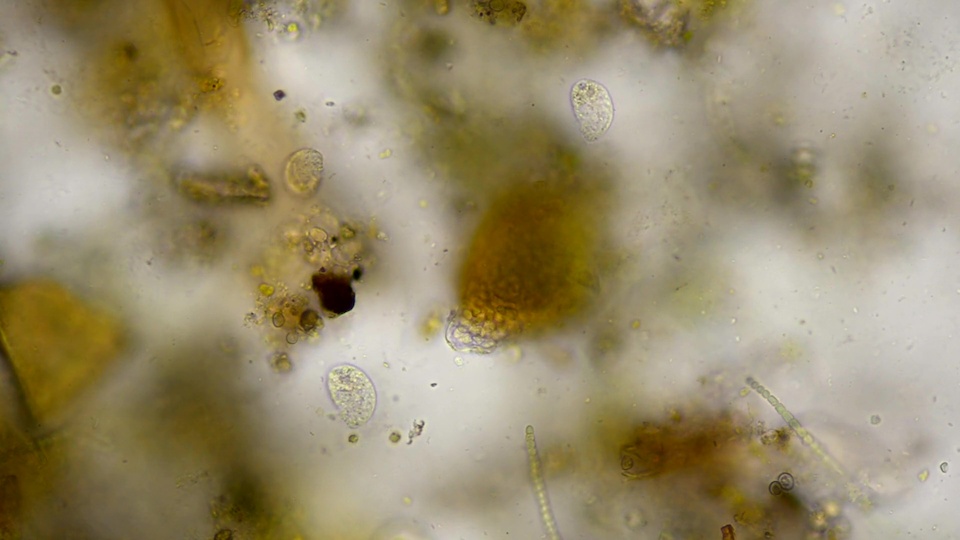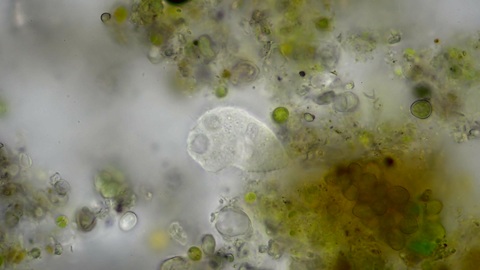
Colpoda?
- janvangastel
- Posts: 533
- Joined: Mon Dec 03, 2018 7:05 pm
- Location: Huizen, Netherlands
- Contact:
Re: Colpoda?
I don't think its colpodea. I don't know the size, but to me it looks more like a chilodonellid.
Re: Colpoda?
Sorry, forgot to specify size: 40x objective, camera is covering most of the FOV diagonally, and the ciliates are around 30 by 15 by 10 um.
Hadn't seen Chilodonellidae but some photos do look similar. The Colpoda guess I was basing a lot on the style of movement which looks very similar to some videos on Wikipedia and YouTube, assuming those are correctly identified.
Hadn't seen Chilodonellidae but some photos do look similar. The Colpoda guess I was basing a lot on the style of movement which looks very similar to some videos on Wikipedia and YouTube, assuming those are correctly identified.
-
Bruce Taylor
- Posts: 1002
- Joined: Fri Sep 04, 2015 11:34 am
Re: Colpoda?
These are in the order Colpodida, without question. That invagination on the margin of the cell (the opening of the vestibulum, leading to the mouth) is very distinctive, and the style of movement (which you noted) is typical. Members of genus Colpoda are common and likely, but there are several lookalikes (Bresslaua, Krassniggia, Tillina, etc.). Reliable identification to genus would require a very close inspection of the oral structures (and, for me at least, a review of the literature!  ) .
) .
Re: Colpoda?
Made a slide with some small flakes of growth scraped from the side of the sample jar. The unbroken flakes are dense enough to create a large number of small voids, restraining their movement a bit, so I could get some video at 100x:

In this one I think contraction of the CV is visible a few times around 0:00, 0:20, and 0:30:


In this one I think contraction of the CV is visible a few times around 0:00, 0:20, and 0:30:

-
Bruce Taylor
- Posts: 1002
- Joined: Fri Sep 04, 2015 11:34 am
Re: Colpoda?
Nice! As near as I can make out, the profile of the vestibulum suggests genus Colpoda. However, I'm not very skilled at differentiating members of this family.
Re: Colpoda?
Thanks Bruce. Do you know if ciliates like these actively change cell shape to help fit around obstacles? I know intuition about how stuff moves doesn't scale down well, but after watching them navigate the tight spaces for a while I get the sense they are deforming a lot more than would be expected just from the motive force passively squishing them against obstacles, especially compared to how rigid they appear when swimming freely. And I occasionally see small, loose obstacles that seem like they should be easily pushed out of the way cause a surprising amount of deformation.
-
Bruce Taylor
- Posts: 1002
- Joined: Fri Sep 04, 2015 11:34 am
Re: Colpoda?
Many ciliates do become more soft and "deformable" when they're in a tight spot. Watch what happens to Paramecium under a drying coverslip, for instance.hans wrote: ↑Wed Nov 25, 2020 3:16 amThanks Bruce. Do you know if ciliates like these actively change cell shape to help fit around obstacles? I know intuition about how stuff moves doesn't scale down well, but after watching them navigate the tight spaces for a while I get the sense they are deforming a lot more than would be expected just from the motive force passively squishing them against obstacles, especially compared to how rigid they appear when swimming freely. And I occasionally see small, loose obstacles that seem like they should be easily pushed out of the way cause a surprising amount of deformation.
An interesting parallel is the recently discovered phenomenon that choanoflagellates can revert to an amoeboid condition when subected to pressure & confinement: https://www.biorxiv.org/content/10.1101 ... 6.171736v1